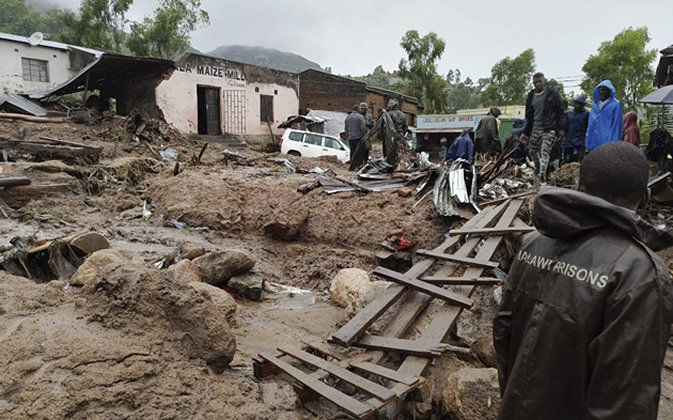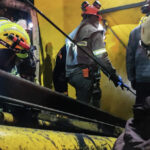
Weather conditions were expected to improve as the storm dissipated over land after days of torrential rains, but localised thunderstorms would persist, and flood levels remained high in some areas, hampering emergency efforts.
“The death toll has risen from 190 to 225 with 707 injured and 41 reported missing,” the Malawi disaster management agency said.
Red Cross Malawi spokesman Felix Washon told AFP they have been hoisting people from trees and rooftops.
“It’s a challenge to reach them, water is high, and bridges are broken.”
Freddy returned to southeastern Africa at the weekend for a second time in less than three weeks, leaving behind a trail of death and destruction.
The authorities in neighbouring Mozambique have so far reported 21 deaths — and the toll there is expected to rise.
Pope Francis offered prayers for the Malawi cyclone victims, during his weekly audience at St Peter’s Square.
“I pray for the dead, the injured, the displaced. May the Lord support the families and the communities hardest hit by this calamity,” he said.
– Hope fading –
Rescue workers in Malawi also warned that more victims were to be expected as they scoured destroyed neighbourhoods for survivors, even as hopes dwindled.
“Four people from my family are still missing as they are buried in the mud,” Alabu Wiseman, 24, said from a Blantyre school serving as a temporary shelter.
The army and police were leading search and rescue operations, which the Red Cross said would continue for at least another two days.
Many people perished in mudslides that washed away homes in and around the country’s commercial capital, Blantyre.
Across Malawi, more than 88,000 people displaced, with many now sheltering in 165 temporary camps.
Authorities counted at least a dozen clinics now rendered inaccessible due to floods or damaged roads.
The impoverished country is already grappling with the deadliest cholera outbreak in its history, which has killed over 1,600 people since last year.
On Wednesday, Blantyre markets and shops were re-opening.
“I have two young daughters to feed,” Daud Chitumba, 27, a minibus conductor told AFP as he headed to work at a local bus depot.
His house was among dozens swept away by a mudslide in the township of Chilobwe.
“We have to rebuild our lives and it starts with picking up the small pieces,” Chitumba said.
– ‘Devastated nation’ –
President Lazarus Chakwera, who returned to Malawi on Tuesday after attending a UN conference in Qatar, was due to visit affected areas on Wednesday.
“We have arrived to a devastated nation,” he said in a statement, hailing the relief efforts by volunteers.
Some said that government assistance has been slow in coming.
“We feel abandoned here,” said Fadila Njolomole, 19.
“Just yesterday, we lost two more people who went with the mudslide as they helped to dig up the bodies. People are hungry and tired.
“My best friend, her brother, sister and mother went with the mudslide and their bodies have not been found. It’s devastating. You can’t even mourn.”
Cyclone Freddy smashed into landlocked Malawi early Monday after sweeping through Mozambique at the weekend.
“We’re still at an early stage…of tallying up the full impact of this cyclone,” said UNICEF Mozambique spokesman Guy Taylor, adding that the toll “will probably increase”.
The storm has unofficially broken the World Meteorological Organization’s benchmark as the longest-lasting tropical cyclone on record, set in 1994 for a 31-day storm named John.
Cyclone Freddy swirled for more 35 days.
Freddy became a named storm on February 6, making landfall in Madagascar on February 21 and sweeping over the island before reaching Mozambique on February 24.
It then returned to the Indian Ocean and gathered new force over the warm waters, then reversed course to come back much more powerful, packing wind gusts of up to 200 kilometres per hour (125 mph).
Cyclones tracking across the entire Indian Ocean are very infrequent, say meteorologists — the last occurred in 2000.
Freddy has travelled more than 8,000 kilometres (5,000 miles).




